November 18, 2020
Co-authored by Glen Galaich, Sacha Thompson, Gwyneth Tripp, and Lalitha Vaidyanathan
This article was originally published in the PEAK Grantmaking Journal, Fall 2020, Issue 17. It has been reposted with the publisher’s permission.
PEAK Grantmaking is a member-led national association of more than 5,000 professionals who specialize in grants management for funding organizations. PEAK members come together to form a vibrant community of practice that advances shared leadership and learning across the sector – helping funders of every size and type maximize their mission-driven work through living their values. Learn more at peakgrantmaking.org and follow @PEAKgrantmaking on Twitter and LinkedIn.
In 2015, the Stupski Foundation launched with a plan to spend down their philanthropic assets by 2029 – a pledge that has taken on even greater urgency in the face of the current confluence of crises. Stupski has also appealed to other grantmakers to join them, citing a “growing movement to redistribute private philanthropic wealth back into communities instead of holding on to funds so their institutions can exist indefinitely.” Preciently, they have asked, “If we are to live our values, we must ask ourselves and our peers: What are we saving our endowments for?”
The sharply rising demands of the moment have spurred a comprehensive redesign of the Foundation’s grantmaking process to move funds more rapidly to their nonprofit partners and the communities they serve. As CEO Glen Galaich puts it:
“Philanthropy is uniquely positioned to act quickly. The only barrier to doing so is ourselves.”
In a recent dialog among Galaich, Grants Manager Gwyneth Tripp, Chief Advisor Lalitha Vaidyanathan, and Design Strategy Consultant Sacha Thompson, the team weighed in on the grantmaking redesign process, highlighting their focus on the user experience, building trust, and shifting power – both internally and externally – to face emerging challenges and achieve progress in racial equity and inclusion.
On shifting power – from board to staff, and from staff to community
Sacha Thompson: Our board of directors recently granted the staff broader agency to issue grants, and we wanted the revamped grant process to reflect and support that change. We created a new timeline that gives the grant process more transparency: both staff and grantee partners now understand how long each stage takes, and can manage expectations accordingly. We also included three check-ins with each grantee partner at pivotal points in the process, ensuring time and space for staff to answer questions, offer support, and work more collaboratively with grantee partners.
Our staff cares about building solid relationships with grantee partners; we didn’t want to erode trust and rapport with an onerous grant process. We wanted the process to reflect the partnerships and relationships already established.
Lalitha Vaidyanathan: As part of the new process, we’ve intentionally shifted power from board to staff, and decided to share power with our grantees in the proposal development process, fostering greater collaboration. For instance, staff now have the discretion to make an award commitment and partner with the grantee to shape it before requesting a proposal.
Gwyneth Tripp: Shifting power this way has made the grantmaking process more feasible and creative. When there are more of us participating, there is more potential to notice where we could make substantial progress, and where we have been limiting ourselves.
It feels like we’re all committed to making a different way possible for everyone. That meant taking a risk: moving away from how it had always been done. We had to find the nodes of established power in the process and work on dissolving them, or redesigning how they showed up, while still retaining the integrity of the process.
Developing the board as a strategic partner
Vaidyanathan: When the board gave staff more agency, I think they were more focused on the outcomes of grantmaking than the process. Their trust gave us the flexibility to design more equitable grantmaking practices.
Many foundations assign attribution at a grant level rather than at the strategy level. That is why most foundations tend to engage the board there. Due to the complex nature of social change, direct attribution at the strategy level is nearly impossible: It is a struggle to articulate to a board that social change has occurred because of something we did strategically. That’s the elephant in the room – everyone knows it.
For us, it was a question of finding a way to keep them involved at the strategic level, and not involved in specific grants. As the new grantmaking experience reveals itself, we expect everyone to become more comfortable engaging at the strategic level.
Glen Galaich: In revamping our grantmaking approach, I learned that we were so tied to making executive decisions without clear organizational processes that key stakeholders were often left out, and left confused, which had many negative unintended consequences for our work and our relationship-building efforts.
When you examine your grantmaking process, I encourage you to note each time you hit one of those points where only a few people – or just one person – are making a decision, and consider how you can invite multiple perspectives to increase the opportunity for equitable outcomes, efficiencies, and more. Whenever possible, center the perspectives of the stakeholders most affected by your processes and decisions. The process is new, and the board’s role in decision-making regarding shifts in our strategy is evolving. While there is trust, as we go along, they may feel it necessary to ensure their voices are part of the conversation.
The redesign process
Thompson: We started by identifying stakeholders and conducting interviews. These interviews served two purposes:
1) to identify the unique obstacles each internal and external stakeholder encounters, and
2) to understand what the ideal grant process would look like.
This exercise helped us to identify the values and functions that each stakeholder deems important. These interviews also opened the door for grantee partners to ask questions and gather insight into the Foundation.
We learned that there were several points where our grantmaking process could be more transparent, and we’ve made changes to reflect that information. I also learned that there is significant value in creating more opportunities and spaces for these conversations outside of the grantmaking process. These types of conversations are a powerful tool for building the trust necessary for great partnerships. I also think it is important that grantee partners see us continuing to learn and improve, and finding ways to invite them into that process.
Tripp: The key to this interview process was building relationships by focusing on what we wanted to accomplish rather than our role or position, or the responsibilities and expectations of any one person. I was able to hear much more clearly when I recast my role, aiming to take in as much as possible rather than filter down, simplify, or come up with a solution.
At the end of one of our interviews, someone shared that they had never been listened to in this way before, and how much it allowed them to share. That was an “aha” moment for me.
Thompson: We also conducted a series of design workshops with our consultants and staff to help us incorporate what we learned into a successful grant process. We’ve started a grant process check-in schedule with all consultants and staff: Every three months, the grant revamp team meets with consultants and staff to discuss what is working well in the process and what is not, and to identify any modifications or recommendations. We hope that this continuous, internal feedback loop will help us to improve.
Continuing the racial equity journey
Vaidyanathan: We are just entering a new phase in our diversity,= equity, and inclusion work where we are operationalizing equity, both internally and externally. This is our opportunity to examine all processes – not just the ones where foundation staff may be feeling some pain, as was the case here – to determine if they need to be modified to better center equity.
Galaich: This grant revamp process was the first time a workgroup reviewed any aspect of our internal approach through an equity lens. Going forward, we will take the same approach to all of our internal and external processes, across the organization. It really is a step-by-step and case-by-case endeavor. Some processes will need a new design approach to revise them, which can be daunting. But when you examine and revamp each process, it can also be energizing and uplifting – especially when you start to see, over time, that you are making actual progress.


